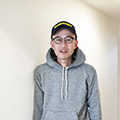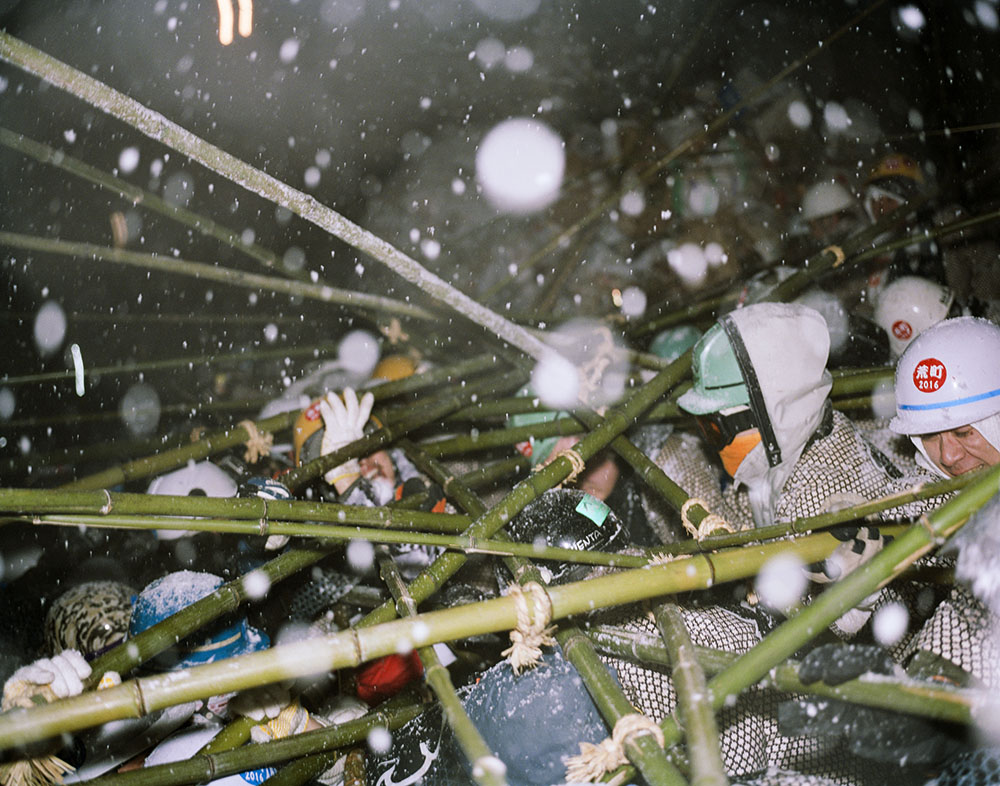Born in Fukuoka, 1974. Kai graduated from Tokyo College of Photography in 2002. His works take the viewer into the crowds of traditional fighting or sporting rituals all around the world that predate our modern concept of “sport. By taking a close-up look at human interaction in these traditional settings, Kais photographs offer us an insight into the very essence of human life. He participated in group exhibitions at the Daegu Photo Biennale (South Korea, 2016), Taipei Photo (Taiwan, 2018), and the Noorderlicht International Photography Festival (Nederlands, 2019), and has held numerous solo exhibitions in Japan. He also presented two of his series—Shrove Tuesday (2013) and “Wounded Bears (2016)—with Totem Pole Photo Gallery. Kai published his latest photo book “Down to the Bone" (Shinjuku Shobo) in March 2020. He won the 28th Society of Photography Award for “Wounded Bears and “Down to the Bone in 2016; the 20th Sagamihara photography Award for his book “Down to the Bone in 2020; and the 45th Nobuo Ina Award for his exhibition “Down to the Bone at Nikon Salon in 2021.

Keijiro KAI
Last update : 01 Jun. 2022
Works

Clothed in Sunny Finery / Iwate Prefecture in Japan , 2018
In this series of photographs, I have taken at a naked festival in Japan, They spread sweat, smell, show human animalism, physicality, and seem to be full anger energy, and be trying to grab the future.
In this work, I feel the reveal of life through their festival that has continued for hundreds of years in a small community, and how humans have lived and communicated (not just between humans). Especially I hope to show this work for the people in this pandemic world now.

Wounded Bears / Nagano Prefecture in Japan , 2015
These photographs show the hitsuke, or fire-setting battle, the climax of the dosojin festival, held annually from January 13 to 15 at Nozawa Onsen, a village in the Shimotakai District of Nagano prefecture. According to historical records, this festival is held since the late Edo period.
During the cold night of January 14, a group of villagers called the sanya ko—consisting of men aged 42 (the second yakudoshi or “unlucky year” in a man’s life according to Japanese tradition) and men of the age of 40 and 41—is joined by male villagers aged 25 (the first yakudoshi in a man’s life) to build the shaden, the shrine for the festival. Then, on January 15, a fight begins between two teams: all the male villagers who are not in their yakudoshi, who try to set fire to the shrine, and the men aged 25, who have to defend the shrine from being ignited. This is a tough test for those “unlucky” young men, and a rite of passage which all of the men born in Nozawa Onsen have to pass.

Down to the Bone / Akita Prefecture in Japan , 2016
This series shows the take-uchi ritual or bamboo fight, the highlight of the rokugo no kamakura, a festival held in the town of Misato in the Senboku District of Akita Prefecture, Japan.
The town of Misato is rich in fresh water with lots of natural springs, which is why it has a rich and long culture of sake-brewing. There are no bamboo resources in and around the town, however, bamboo is used for sake barrels, thus widely used.
The kamakura festival itself is said to have a history of over 700 years, while the take-uchi is said to have been added during the early Edo-period: Young sake brewers used to write their wishes on so-called tenpitsu—long stripes of paper colored green, yellow, red, white and blue—, attach these stripes to left-over bamboo and rampage around, hitting on purified fire with their bamboo poles. This is said to be the origin of the present-day take-uchi. It was born out of the rivalry between sake-brewers and distinguishes Misato’s kamakura festival from other kamakura festivals in the area.